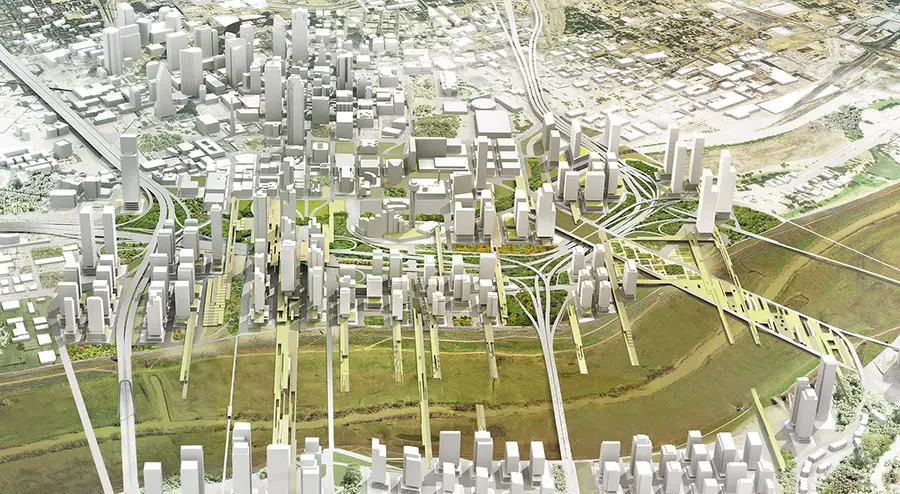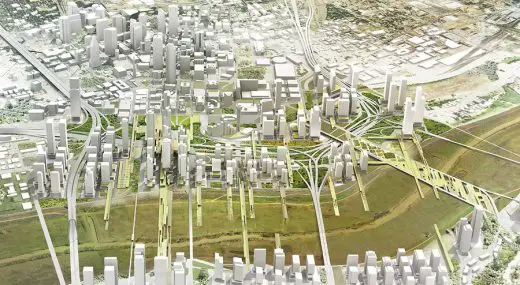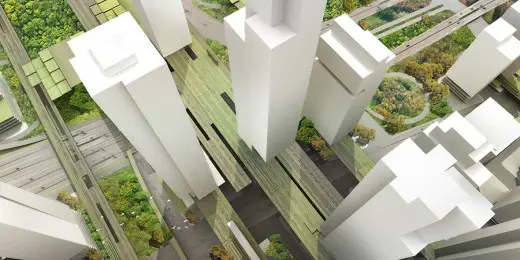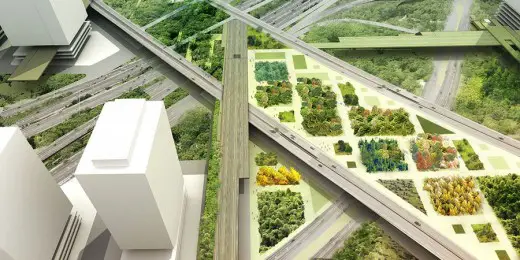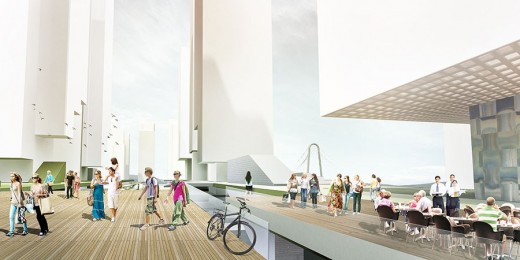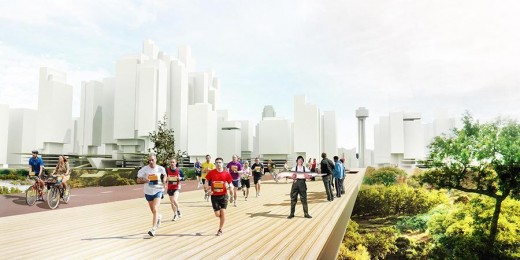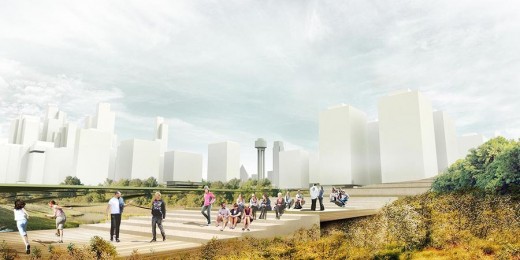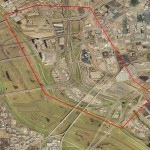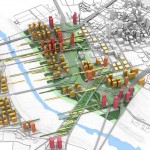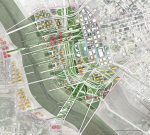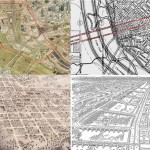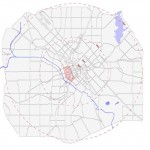Bridging, The Connected City International Competition, Dallas architecture, Texas design contest news
Bridging – The Connected City Finalist
Texas Competition Urban Solution design by Architect Bogdan Chipara
June 11, 2010
Design: Architect Bogdan Chipara
An Urban Design Solution for “The Connected City” International Competition
Dallas Competition Urban Design Solution
“Dallas is the third-largest city in the state of Texas and the ninth-largest in the United States, with a population of 1,197,816. At the center of Dallas, within roughly a 3-mile radius of the Trinity River, population numbers are 177,345, with a density of 5,088 people/square mile. Downtown is experiencing rebirth and rejuvenation with a re-surging downtown population and a daytime workforce of 135,000. The celebrated Dallas Arts District, coupled with a series of new urban parks, is championing a more vibrant and sustainable downtown environment.” – from the competition brief.
“Bridging on steroids’… draws many new links animated with energy, ecology and fascinating juxtapositions. But these are bridges for people not for cars.” “It pays homage to Kessler and the original intent of the city… very appealing and as it speaks to the character, structure and form of the city” – from the Comments of the Jury.
The intention of connecting the city to the river can be seen in drawings from the early 19th century. George Kessler followed this intention in his city plans, which envision Dallas expanded until the edge of the riverbed. He also proposed two main connections to the other riverside, placed as a continuation of the urban fabric.
The current proposal follows this intention, and adds a new one by which the habitat of the river is expanded towards the city. Thus, the site, situated in between those two environments, is influenced by them in equal measure. The areas themselves are divided in two: one half is occupied by plots for constructions and roads, and the other half is covered with vegetation and pedestrian walkways.
The proposed elevated walkways create a flow of circulation from the city into the riverbed by passing over the freeway/railway infrastructure and also over the levee. They create a secondary pedestrian circulation layer by connecting the lower levels of the proposed buildings and descend on the ground level of the riverbed. Their second role is to sustain an irrigation system which brings water from Trinity River into the site. This water is used once, to sustain eight parks, and second, to transform the areas adjacent to the freeway infrastructure (inaccessible and not suitable for building) into one large green area.
“The Challenge area is also the home to some of the most significant freeway infrastructure within Dallas. Multiple freeways converge in this area creating vital regional connections that have influenced Dallas’ growth since the late 1960s. They are significantly important as a part of the larger North Texas highway system. Their functionality is key to many areas of our city and their presence has influenced the development of this area for decades.” – from the competition brief.
The lower levels of the proposed buildings have a public character: shopping centers, restaurants, clubs, leisure and sports facilities. etc Green areas are proposed on the building levels that reach the heights of the elevated walkways. The cummulative area for these green terraces is 7.61ha (18.8acres).
Bridging – The Connected City Entry images / information from Architect Bogdan Chipara
Location: Dallas, Texas, USA
Dallas Architecture
Dallas Center for Performing Arts – The Dee and Charles Wyly Theatre
Joshua Prince-Ramus / Rem Koolhaas
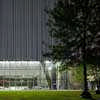
photo : Iwan Baan
Wyly Theatre Dallas – AT&T Performing Arts Center
Perot Museum of Nature & Science
Morphosis
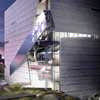
picture from architect studio
Perot Museum of Nature & Science Dallas
Winspear Opera House
Foster + Partners
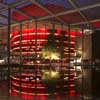
photo : Nigel Young, Foster+Partners
Dallas Opera House
Texas Architecture Designs
Modern Texan Architectural Designs – selection on e-architect:
Canyon Residence, West Lake Hills community, Austin
Design: Clayton Korte
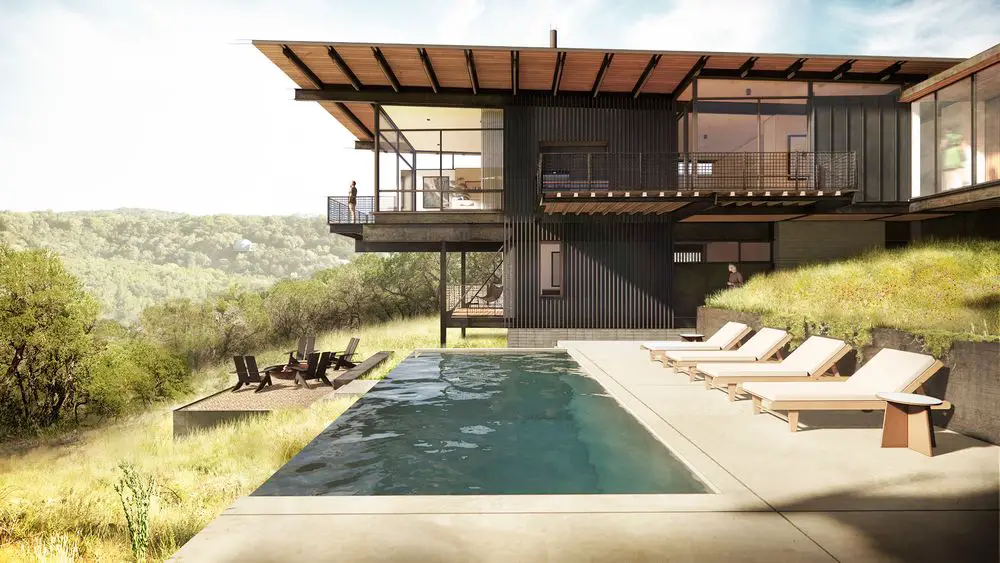
render : Clayton Korte
Canyon Residence at Wildcat Hollow, Austin, Texas
The Offset House, West Lake Hills
Design: Dick Clark + Associates
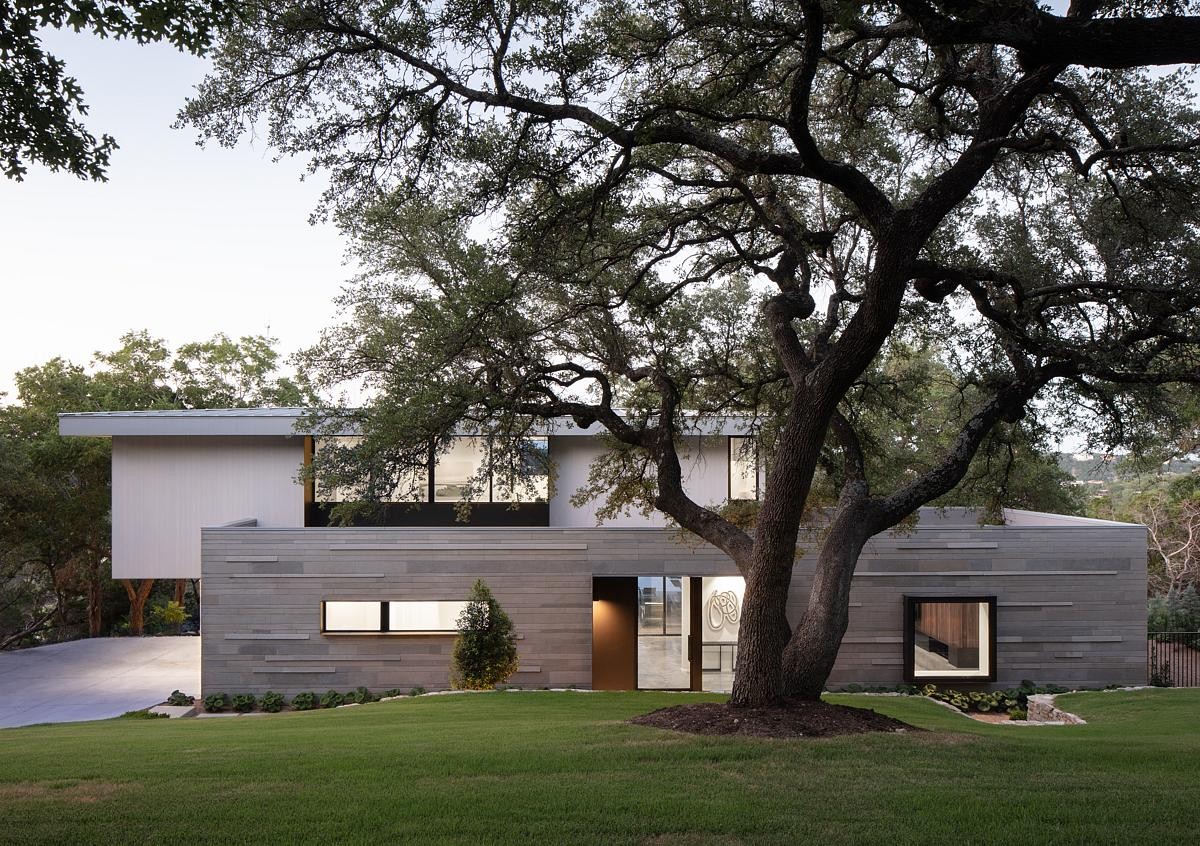
photo : Jake Holt
The Offset House, West Lake Hills, Texas
Neighbouring State/Country Architecture to Texas
Buildings / photos for the Bridging – The Connected City Entry USA page welcome

